No. The type of oil is specified based on the design of the vehicle and it is normally given in the OEM guidelines (OEM) .
Engine oils of the same performance level / specifications are compatible and hence can be mixed / used for top ups.
Colour does not affect the performance of the oil. Different colour dyes are added to differentiate brands. Red colour masks oil colour which otherwise looks dark and blackish due to impurities.
Start by consulting your vehicle’s owner’s manual. Find the recommended performance requirements and viscosity requirements of the engine lubricating oil for your car.
Colour does not affect the performance of the engine oil. Different components in the engine oil can make the colour of the oil different.
Requirement of oil change depends on time or distance the vehicle has run, performance level of the engine oil, quality of the fuel, OEM recommendations and operating conditions. Under the conditions in Sri Lanka, it is advisable to change the engine oil at OEM recommended mileage or in six months whatever comes first.
Oils should be bought only from reliable sources. If not, one will end up using an inferior quality product resulting in damage of the engine.
Not necessarily, because oil can turn black due to improper draining of oil while changing, poor maintenance, or quality of previously used oil and fuel, excessive carbon deposits on engine parts etc. In fact, oil will tend to blacken as it cleans the engine & various parts and accumulates dirt particles in itself.
Synthetic motor oils perform better in extremely cold climates. At the same time, synthetic motor oils are usually more expensive. Consider all these factors, and above all, consult your vehicle’s owner’s manual.
A bbl is a Barrel, a volumetric unit measure for crude oil and petroleum products equivalent to 42 U.S. gallons, or approximately 159 liters.
A standard is a document that provides requirements, specifications, guidelines or characteristics that can be used consistently to ensure that materials, products, processes and services are fit for their purpose.
ACEA is an abbreviation for Association des Constructeurs Européens de l’Automobile (Association of European Automotive Manufacturers). The European Automobile Manufacturers Association (ACEA), founded in 1991, represents the interests of the fifteen European car, truck and bus manufacturers at EU level. Its membership consists of the major international automobile companies, working together in an active association to ensure effective communication and negotiation with legislative, commercial, technical, consumer, environmental and other interests.
The members of ACEA are competitors in the automobile market place and support free and fair competition as a trade policy and a legal concept. ACEA is an Economic Interest Grouping. Its headquarters are based in Brussels and made up of the Secretary General and the Secretariat. In 1995 and 2004, ACEA opened additional offices in Tokyo and Beijing.
Technical expertise and advisory input comes from over twenty different working groups, made up of experts from the member companies.
An arbitrary scale expressing the gravity or density of liquid petroleum products. The measuring scale is calibrated in terms of degrees API . The higher the API gravity, the lighter the compound. Light crudes generally exceed 38 degrees API and heavy crudes are commonly labeled as all crudes with an API gravity of 22 degrees or below.
API is an abbreviation for American Petroleum Institute. The American Petroleum Institute, commonly referred to as API, is the largest U.S trade association for the oil and natural gas industry. This trade association of petroleum producers, refiners, marketers, and transporters, organized for the advancement of the petroleum industry by conducting research, gathering and disseminating information, and maintaining cooperation between government and the industry on all matters of mutual interest.
The association’s chief functions on behalf of the industry include advocacy and negotiation with governmental, legal, and regulatory agencies; research into economic, toxicological, and environmental effects; establishment and certification of industry standards; and education outreach. API both funds and conducts research related to many aspects of the petroleum industry.
API distributes more than 200,000 copies of its publications each year. The publications, technical standards, and electronic and online products are designed, according to API itself, to help users improve the efficiency and cost-effectiveness of their operations, comply with legislative and regulatory requirements, and safeguard health, ensure safety, and protect the environment. Each publication is overseen by a committee of industry professionals.
In addition to training industry workers and conducting seminars, workshops, and conferences on public policy, API develops and distributes materials and curricula for schoolchildren and educators.
API defines the industry standard for the energy conservation of motor oil and also defines and drafts standards for measurement for manufactured products.
API provides vessel codes and standards for the design and fabrication of pressure vessels that help safeguard the lives of people and environments all over the world.
API conducts lobbying and organizes its member employees’ attendance at public events to communicate the industry’s position on various issues.
Knocking and pinging are generally caused by improper combustion in your engine. If the fuel-air mixture auto-ignites somewhere in the cylinder, the auto-ignition combustion wave can interact with the spark-initiated combustion wave, causing the vibration you hear as knock or ping. An increase in engine load, temperature, compression, spark-advance, air-fuel ratio and combustion chamber deposits all contribute to the tendency for an engine to knock. The use of higher octane fuel reduces this tendency. Deposits in the combustion chamber can increase you engine’s appetite for octane by increasing the compression ratio.
The cetane number is a measure of the ignition or combustion quality of the fuel in a diesel engine. The higher the RPM of the engine, the higher the required cetane number. The cetane number of a fuel is determined in an engine test procedure.
ISO is an abbreviation for International Organization for Standardization. International Organization for Standardization is the world’s largest developer of voluntary International Standards. International Standards give state of the art specifications for products, services and good practice, helping to make the industry more efficient and effective. Developed through global consensus, they help to break down barriers to international trade.
ISO was founded in 1947, and since then have published more than 19,000 International Standards covering almost all aspects of technology and business. From food safety to computers, and agriculture to healthcare, ISO International Standards impact all our lives. ISO International Standards ensure that products and services are safe, reliable and of good quality. For business, they are strategic tools that reduce costs by minimizing waste and errors and increasing productivity. They help companies to access new markets, level the playing field for developing countries and facilitate free and fair global trade.
JASO is an abbreviation for Japanese Automotive Standards Organization.
The Japanese Automotive Standards Organization is part of the Society of Automotive Engineers of Japan (JSAE). JASO is an organization that sets automotive standards in Japan, analogous to the Society of Automotive Engineers (SAE) in the United States. JASO also sets standards for grades of oil; the highest grade for two-stroke spark ignition engines being JASO FD, and JASO MB for four-stroke spark ignition engines.
Kinematic viscosity of an oil is its resistance to flow at a specific temperature.
Monograde oils are designed to be used within a defined temperature range. The monograde oils are classified by the thickness (or viscosity) of the oil. The intention is to ensure that the oil will cycle as required under specific operating conditions. Monograde oils are defined by a viscosity rating at 100°C only. The viscosity rating at low temperature is not considered or specified. Limits of the viscosity values at 100°C for standard mono-grades (SAE 30, SAE 40, SAE 90, etc) are classified by the SAE International.
These are oils designed to give better viscosities at both high and low temperatures than regular monograde oils. The viscosity of all oils falls as they get hot – and multigrade oils are formulated to minimize this effect. Multigrade oils are defined by a viscosity rating at a low temperature, as well as one at 100°C. Limits of the viscosity values at both low and high temperatures for standard multigrades (SAE 0W-20, SAE 5W-30, SAE 10W-40, SAE 85W-140, etc.) are classified by the SAE International.
Distance unit measure of 1,852 meters, or 6,076.12 ft
OEM is an abbreviation for original equipment manufacturer. An original equipment manufacturer, or OEM, manufactures products or components that are purchased by another company and retailed under that purchasing company’s brand name. OEM refers to the company that originally manufactured the product. When referring to automotive parts, OEM designates a replacement part made by the manufacturer of the original part.
An automobile part may carry the designation OEM if it is made by the same manufacturer and is the original part used when building and selling the product. The term aftermarket is often used for non-OEM spare parts.
Organization of Petroleum Exporting Countries.
SAE is the abbreviation for Society of Automotive Engineers, now called “SAE International”.
In 1902 two magazine publishers, Peter Heldt of The Horseless Age, and Horace Swetland of The Automobile were advocates of the concepts for SAE. In 1905 this Society of Automobile Engineers was founded in New York City and managed by volunteered officers. Andrew L. Riker served as the first president, Henry Ford served as the society’s first vice president and John Wilkinson served as the Second Vice President. The initial membership was engineers with annual dues of US$10. Over the first 10 years SAE membership grew steadily, and the society added full-time staff and began to publish a technical journal and a comprehensive compilation of technical papers, previously called SAE Transactions, which still exist today in the form of SAE International’s Journals. At the annual meeting in 1916, representatives from the American Society of Aeronautic Engineers, the Society of Tractor Engineers, as well as representatives from the power boating industry made a pitch to SAE for oversight of technical standards in their industries. Out of the meeting in 1916 came a new organization, to represent engineers in all types of mobility-related professions and the Society of Automobile Engineers became the Society of Automotive Engineers. After World War II, the Society established links with other standards bodies and automotive engineering societies worldwide. In 2006, SAE officially changed its name from Society of Automotive Engineers to SAE International to reflect the increasingly international scope of its activities and membership. As of 2010, the society serves more than 120,000 members globally.
SAE International provides a forum for companies, government agencies, research institutions and consultants to devise technical standards and recommended practices for the design, construction, and characteristics of motor vehicle components.
SAE publishes more than 1,600 technical standards and recommended practices for passenger cars and other road going vehicles. These provide industry references for measurement of engine power, motor oil classification, tool and fastener sizes, and onboard diagnostic connectors and codes. SAE also publishes standards and recommended practices for headlamps and other vehicular lighting, brakes, automatic transmission fluid, communication networks, electric vehicle charging systems, vehicle ergonomics, and numerous other aspects of vehicle design, construction, performance, and durability.
SAE publishes over 6,400 technical documents for the aerospace industry. These include Aerospace Standards (AS), Aerospace Recommended Practices (ARP), and Aerospace Information Reports (AIR). Aerospace Standards apply to missile, airframe, ground-support equipment, propulsion, propeller, and accessory equipment. Aerospace Material Standards are a subset of Aerospace Standards governing materials science and engineering for aerospace applications. Aerospace Recommended Practices are recommendations for engineering practice. Aerospace Information Reports contain general accepted engineering data and information.
SAE organizes or administers more than 25 international meetings and exhibitions each year that cover all aspects of technology related to design, manufacture, and total life cycle technology for the automotive, aerospace, off-highway, truck and bus, fuels and lubricants, and other related mobility industries.
Please visit http://www.recycleoil.org/ to find your nearest drop off centre and any additional information you require
Two Wheeler / 3 Wheeler engines are air-cooled engines unlike the passenger car engines which are cooled by water or by a coolant. The Engines are effectively cooled by the air drag across the engines while the vehicle is in motion. The Engine operating temperatures exponentially shoots up when the vehicle speeds are reduced or the vehicle is stopped since the air drag drastically reduces under these conditions as encountered in a typical city operating conditions. Secondly these vehicles use wet clutch mechanism and the same engine oil lubricates the engine, the wet clutch and the gears. So oil with high Friction Modifier used in Engine Oil will lead to clutch slippage. The Oil used for Four Stroke engines, Two Wheeler / Three Wheeler, need to take care of the higher temperature operating condition as well as it should have controlled friction characteristics to take care of the wet clutch requirement. At the same time it should have reduced friction characteristics as required by the Engines & gears. Caltex Havoline Super 4T Oil is specially developed to meet these special requirements of this class of engines.
The development in the Vehicle Engine Technology is moving in a fast pace to take care of the higher power, compact size and the latest emission requirement. Due to these continuous development in the field of Engine Technology, the speed of the engines increases, the oil sump capacity becomes lower and lower, after treatment of the exhaust gases has been introduced (Catalytic Converter, particulate filter etc.). To keep in pace with the development in the Engine technology, the oil performance level also has to be continuously improved to meet the additional requirement. American Petroleum Institute (API ) and various international organizations sets standard for the Engine Oil to suit the requirement of the development in Engine Technology. API Oils are classified as SA, SB,….SF, SG, …SJ, SL, SM and SN for Petrol Engines and as CA, CB, CC, CD, CF, CF4, CG4, CH4, CI4 and CJ4 for Diesel Engines. Oil companies market many types of engine oils meeting the performance requirements of current API & other international standards for use in all type of petrol & diesel engines.
The oil quality gets reduced while in service due to oxidation of the oil, contamination of the oil and depletion of the additives as it gets used up during its service. Oxidation of the Oil in presence of air at high temperature produces acidic and gummy substances. If it is allowed to increase beyond certain limits then it will start corroding the equipment or leave unwanted deposits on the moving parts. Similarly contamination of the oil with water, dust, dirt and soot from combustion products leads to corrosion and abrasive wear. The TBN, anti-wear and performance enhancing additive gets used up in service and below certain levels will not be in a position to protect the equipment. Because of these primary reasons, we need to change the oil once it loses its ability to protect the equipment.
You don’t just need anti-freeze; you need a coolant. A coolant is much more than just an anti-freeze. It provides efficient heat-transfer, protection against corrosion, protection against boil-over and protection against freezing.
You are correct in assuming that water is the best heat-transfer fluid. So, if you don’t need the freeze, and boil-over protection, why spend the money? The reason is that most modern engines need the additional boil protection that is provided by the base fluid. Also, water, just as a glycol/water mixture, is very corrosive; it causes rust. It will actually attack the metal components in your engine. A coolant will also provide the all important corrosion protection. It will prevent the metal components in your cooling system from rusting.
Most coolants from well-known chemical or petroleum companies will give you the required product characteristics. If the product claims to meet the international specification (such as JIS K 2234 or ASTM D 3306 (cars) or ASTM D 4985) or national coolant specification that can be an indication of minimum quality level for the product. However, since these specifications are not policed, there are no guarantees.
Meeting OEM requirements can be another indication. If a product has OEM approvals, high quality is assured, because the product has been fully tested by the OEM technical department. The easiest route is to follow OEM recommendations. Selecting a product is just the first step, the use and maintenance of the product is just as important for proper functioning of the coolant. Always follow the manufacturer or OEM recommendations. Overdosing, under dosing, or improper change out intervals will inevitably lead to product and component failure.
An ethylene glycol-based coolant is designed for use between 35% and 68%. The low limit is imposed by the inhibitor concentration. Lower concentration will not provide the required corrosion protection. At 68% the maximum freeze protection is attained (-70 °C). A different base fluid (propylene glycol) is required for increased freeze protection.
For water based corrosion inhibitors the optimum range for the inhibitor concentration will be recommended.
Check the package of the coolant or the product for proper dosage based on your specific requirements.
No!
There are various Coolants and corrosion inhibitors available in the market today. Application requirements will determine the base fluid selection. Which base fluid is used will also determine the corrosion inhibitor package.
Similarly the application requirements will determine the optimum inhibitor selection. Coolant can differ depending on the application. A product designed for use in a slow-medium speed diesel engine will be different from a HDD product. Both will be different formulations from those designed for automotive use. Indiscriminately using these products in applications for which they were not designed will, over time, lead to cooling system problems.
Coolant -Havoline XLI comes pre-mixed and as a concentrate.
It is so special because Caltex has been formulated to overcome some of the difficulties faced in automotive and industrial cooling systems. Caltex Coolants are based on a unique Carboxylate technology.
The product has extended life. This means it will provide protection for 5 years or 250,000 km in passenger car and light duty applications, and up to 4 years or 600,000 km in heavy duty applications. This is achieved without the need for frequent inhibitor top up (or SCA or filter addition). That means less maintenance, less testing, less product purchased and a lot of money in the bank.
Also the technology is truly universal. It can be used in all applications and all base fluids.
At the same time the product offers improved performance, better corrosion protection and a reduction in hardware failures.
Nothing much, Caltex Coolants are compatible with traditional products. We tested this thoroughly. If the contamination is minor (<15%o), you don’t have to do anything: Caltex Coolants will continue to provide full protection. However, if a larger contamination has occurred, you need to treat the system as if it was on a traditional Coolant.
This is also why the different color is a benefit: a color change will indicate that you do have a contamination.
The color change will be your first indication, After that you need to test the product.
Caltex has different test options available for you. These tests will tell you if you need to change-out the cooling system if you want to maintain the Extended Life benefits of the Coolent.
Water is the main component of the engine coolant that is in your: engine. Because of that it will affect the product.
Poor water quality will have an effect on ALL engine coolants and hence engine cooling systems. That is one of the reasons Caltex also markets a pre-mixed product, Caltex Havoline XLI Pre-Mixed, where the right concentration is assured, and only quality water is used. This is the ideal product for filling or topping up a system. However, due to the unique properties of Caltex Coolant, it is actually more tolerant of poor quality water.
Caltex does have a guideline that explains minimal water quality recommendations.
A cooling system contains almost all the materials that can be found in the engine. Testing the Coolant for compatibility is a major part of the qualification procedure.
So the answer is yes!
The effect on paint is a standard test during the Coolant development. The test will also be a requirement in most OEM specifications. Caltex Coolants were tested, and they do not affect the paint.
If you want to change out the Coolant you need to drain the cooling system. Then flush it thoroughly with water. Then you can add a pre-mixed solution of the Coolant.
In some cases the cooling system can be fouled up to such an extent that water alone will not clean it out. Only in those cases it is recommended to use a cooling system cleaner. Beware, these cleaners are aggressive. When they are used, proper draining of the cleaner and extensive flushing with water is required to avoid problems caused by left over cleaner in the system.
Most OEMs will include a recommendation on engine coolant cleaner.
An ethylene glycol based Coolant is toxic: ethylene glycol is a toxic product.
Any used Coolant is a potential hazardous waste. A Coolant has been in an engine and been in contact with a lot of metals. Some metals will be dissolved in the base fluid. Disposal will therefor depend on local legislation requirements. The use of an extended life coolant will definitely decrease the associated problems.
Recycling will also help you manage the waste problems.
Caltex Coolants can be recycled. The quality of the recycled product will depend on the recycling technique or recycling machine, the re-formulation and the re-formulation package. Not all recycling techniques are good. Most suppliers, OEMs and also Caltex recommend vacuum distillation or reverse osmosis techniques to bring the product back to just the base fluid. Reformulation will require the correct dosage of a good inhibitor package. The resulting product should meet the requirements of a new product.
Caltex Havoline XLI Corrosion Inhibitor Concentrate can be used as a reformulation package.
Caltex Coolants are competitively priced. The product has major benefits. It also ensures extended life for the engine coolant. You will only make a correct comparison is these features and benefits are taken into account.
Caltex has a cost comparison sheet that can help you identify the savings associated with the use of Caltex Coolants.
You need something to cool your engine. In a lot of cases the OEM will recommend you to use a fully formulated engine coolant. Sometimes you will not need the ethylene glycol base fluid that provides the freeze and boil-over protection. You will need the corrosion protection a Coolant provides.
No, as with a lot of products, corrosion inhibitors and cooling system treatments have been developed with specific applications in mind. That is why you will find a large offering of such product in the market. Most of these products will not work in applications for which they haven’t been designed.
Caltex Havoline XLI Corrosion Inhibitor Concentrate was developed to provide complete corrosion protection in all cooling system applications. The Unique Carboxylate Technology ensures long time corrosion protection for all the metals and materials in a modern cooling system, including Aluminium, cast iron, steel, copper, brass, zinc and various solder alloys.
Unlike most corrosion inhibitors it meets the performance requirements of fully formulated engine coolants including international specifications (such as JIS K 2234 or ASTM D 3306 (cars) or ASTM D 4985)*. It also allows virtual maintenance free service. Caltex Havoline XLI Corrosion Inhibitor Concentrate provides full corrosion protection for at least 4 years.
Be careful.
Read your OEM recommendations. If you require a glycol based engine Coolant you should use a Coolant. Caltex Coolants are ideally suited for these applications.
If you don’t need the freeze and boil-over protection, use a high quality corrosion inhibitor package that will protect all the elements in your cooling system. Caltex Havoline XLI Corrosion Inhibitor Concentrate is such a product.






